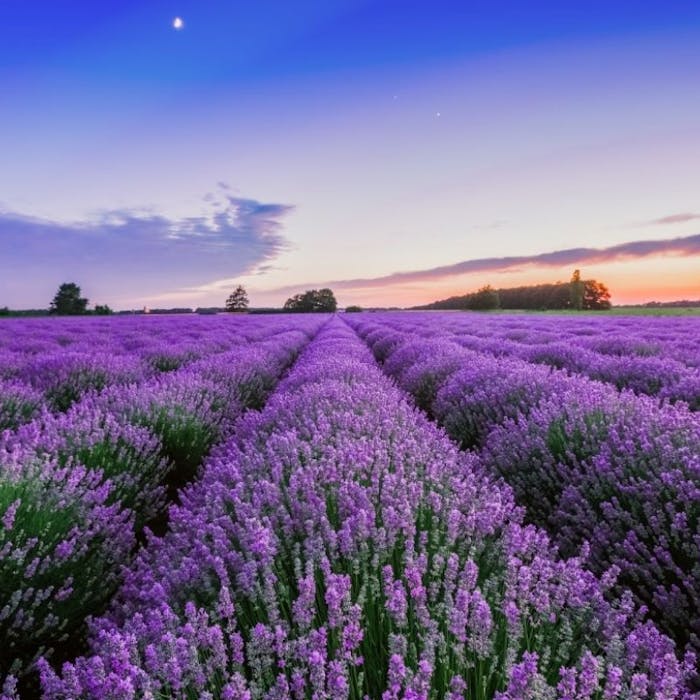
Lavender growing - a traditional British industry recently revived
Lavender is seen as a traditional English plant, and has been the basis of a number of commercial activities, including scent and oil-making. Native to the 'Old World' - Britain and its European neighbours, its vibrant purple hue and intoxicating essence have made the plant popular for scented products, traditional medicine and cosmetics.
Lavender is one of a genus of 47 known species of flowering plants in the mint family. The most common form in cultivation is the common, or English, lavender.
The Romans are believed to have introduced lavender to England, but there is no evidence of live lavender plants in any part of the UK until the 13th Century, so there are no native lavender species to the UK. Roman soldiers carried their own ‘first aid kit‘ of herbs of which lavender was part, and used it for purposes such as healing, soothing, repelling insects and as oil for massage.
In medieval times, monasteries provided the only hospitals, and amongst the wide range of herbs cultivated in 'physick' gardens was lavender - which was used in many of their remedies. By the 16th century, lavender had been established as the ‘herb of cleanliness and calm’, and was laid in clothes' chests to prevent damage, scattered in beds to deter vermin and mixed with charcoal to clean teeth. Queen Elizabeth I used it both as a perfume and also in her tea to treat her migraines.
Lavender has a strong association with the Victorian era, when the widest use of lavender was in perfumery and the scenting of linen and clothes. But by the end of World War One, commercial lavender-growing suffered a rapid decline. The growers in previously thriving fields around London - the North Surrey Hills around Sutton and Mitcham, and at Carshalton and Wallington, once world centres of lavender production - succumbed to urban development. By the 1980s, there was just one commercial grower left in the country - Castle Farm in Kent, established in 1892.
However, the British lavender industry has been enjoying something of a revival in recent years - growers have established themselves in Shoreham, Kent; Broadway in Worcestershire; Chichester in West Sussex and Heacham in Norfolk, and most welcome the public to visit. They have an obvious appeal, especially at the peak of their flowering season in the summer.
Further reading
Links to external websites are not maintained by Bite Sized Britain. They are provided to give users access to additional information. Bite Sized Britain is not responsible for the content of these external websites.
